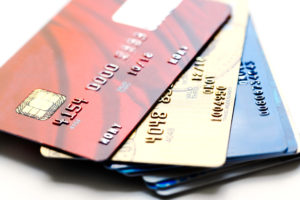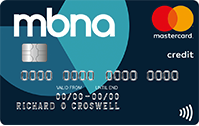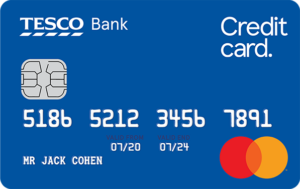 A money-transfer card is a type of credit card that allows you to transfer money from your credit card into your bank account. You can then use these funds to help pay off debts such as an overdraft or use it as a low-cost loan to make a purchase. On this page, you can find all of the key information you need to know about money-transfer credit cards, plus the best deals currently on the market.
A money-transfer card is a type of credit card that allows you to transfer money from your credit card into your bank account. You can then use these funds to help pay off debts such as an overdraft or use it as a low-cost loan to make a purchase. On this page, you can find all of the key information you need to know about money-transfer credit cards, plus the best deals currently on the market.
What is a money-transfer credit card and how does it work?
You can use a money-transfer credit card to move money into your current account while building up a balance on the card. While a purchase credit card allows you to make purchases that are then paid off later, a money-transfer credit card lets you put that money in your current account rather than spend it. Similar to balance-transfer cards, some money-transfer credit cards come with an introductory 0% period for a number of months, allowing you to avoid paying interest during that time.
Be aware, however, you will usually need to carry out your money transfer within a set time, ie. 60 days, to qualify for the 0% offer, and you will need to pay a transfer fee. Fees are usually a percentage of the total amount – typically around the 4% mark – and will be added to your balance.
Which money-transfer credit card is best for you?
We have teamed up with Creditec* to help you compare credit card deals and check your eligibility in minutes. You will be able to find out which credit cards you are most likely to be accepted for through a soft credit check, which will not affect your credit score. You can then tailor your personalised list to sort cards by the features that matter most to you. This could mean filtering for the type of credit card you want, sorting the list by the rate of interest or highlighting the cards you are most likely to be successful in applying for. You can click here to compare deals*.
Best money-transfer credit cards – January 2025
Based on our analysis, these are our top 3 money-transfer credit cards:
| Name of card | Representative APR | Interest-free period | Money transfer fee | Perks | Extra information |
| MBNA Money Transfer Credit Card - Check eligibility | 24.90% variable | Up to 12 months | 4.00% | n/a | Interest-free period subject to status |
| Virgin Money Balance Transfer Credit Card - Check eligibility | 24.90% variable | 12 months | 4.00% | Offers through Virgin Group discounts | 12 months interest-free on balance transfer and purchases, as well as money transfer |
| Tesco Bank Balance Transfer Credit Card - Check eligibility | 24.90% variable | 9 months | 3.99% | Earn Tesco Clubcard points | Interest-free periods on balance transfer and purchases |
Best money-transfer credit card with longest interest-free period

- Best for: Those looking for the longest interest-free period with a low fee and reasonable APR
- Representative APR: 24.9% variable
- Interest-free period: Up to 12 months
- Transfer fee: 4.00%
- Perks: No specific perks
- Annual fee: No annual fee
- Why we like it: It's a good all-rounder, with the longest interest-free period currently available – although it is subject to status – as well as a reasonable transfer fee. Find out more on the MBNA website.
Best money-transfer credit card with balance transfer

- Best for: Those with an existing debt on a credit or store card that they'd like to transfer, as well as those needing money transfer
- Representative APR: 24.9% variable
- Interest-free period: 12 months
- Transfer fee: 4.00%
- Perks: Offers through Virgin Group discounts
- Annual fee: No annual fee
- Why we like it: A great combination of interest-free periods on money transfer (12 months), balance transfer (16 months) and purchases (13 months). Find out more on the Virgin Money website.
Best money-transfer credit card for rewards

- Best for: Those who regularly shop at Tesco
- Representative APR: 24.9% variable
- Interest-free period: 9 months
- Transfer fee: 3.99%
- Perks: Earn 5 Tesco Clubcard points when you spend £4 in Tesco, earn 1 point for every £4 spent on Tesco fuel (excluding Esso) plus 1 point for every 1 litre bought, and earn 1 Clubcard point when you spend £8 outside of Tesco
- Annual fee: No annual fee
- Why we like it: This card has a 9 month interest-free period for money transfers and an up to 22 months interest-free period on balance transfers. Cardholders can also collect extra Clubcard points when spending on the card. Find out more on the Tesco Bank website.
How to make the most of a money-transfer credit card
Money-transfer credit cards work by allowing you to transfer money from your card into your bank account. The amount you can transfer will depend on your financial situation and credit score. It will usually be a percentage of your overall credit limit which will be decided by your card provider. Once you’ve carried out your money transfer, you make monthly payments to your credit card provider, just as you would with any other credit card.
Don’t be tempted to withdraw money from your credit card (known as a cash advance) instead of transferring the funds as this can be expensive. You will be charged interest from the date you make the withdrawal and interest rates on cash advances can be high – often in the region of 25% APR. You’ll usually have to pay a fee too. Withdrawing cash on a credit card will also be recorded on your credit report.
You can use a money-transfer credit card to help pay off existing debts, such as an overdraft, store card or a loan. You will then owe money to the credit card provider rather than the bank or lender. Alternatively, you can use a money-transfer card to help pay for unexpected bills or to make a cash purchase. It is best not to use the credit card itself for purchases as there may not be a 0% introductory offer on purchases, or if there is it is unlikely to be competitive.
What to consider before you get a money-transfer credit card
Before applying for a 0% money-transfer credit card, it is worth taking some time to consider the following:
- What do you need the card for? Are you paying off existing debts, or are you using it for a new purchase? If you’re planning to use it for a purchase, is it something you could live without?
- Do you know what the transfer fee is and is there a time limit for making transfers? It’s important to factor this in before applying.
- Can you afford the monthly repayments? If you are taking advantage of a 0% offer, it is a good idea to divide the amount borrowed by the number of 0% months, and pay off this amount each month. This will help ensure you have cleared your balance before the 0% period ends and you start paying interest.
- If you can’t clear your balance before the 0% deal ends, do you know how much interest you will be charged? Interest rates can be high so you may want to transfer your remaining balance to a 0% balance-transfer card instead.
- Have you checked your credit score? A good score increases the chances of being accepted for the top deals.
Using a money-transfer credit card can affect your credit rating in the same way as any other credit card. If you are late with repayments or miss them completely, this can leave a mark on your credit file and negatively affect your credit score. Missing a payment can also result in you losing your 0% offer. On the other hand, if you use your money-transfer card sensibly and make your repayments on time, this can have a positive effect on your credit score and show lenders you are a responsible borrower.
The difference between a money-transfer and a balance-transfer credit card
With a balance-transfer credit card, you can move existing card balances across and, if the card has a 0% introductory offer, avoid paying interest on that debt for a number of months. You will usually have to pay a transfer fee and also carry out your transfers within a certain time.
Money-transfer cards, on the other hand, allow you to move money from the card into your bank account, and you can then use the funds for whatever you need. Like balance-transfer cards, you can benefit from 0% introductory offers, but they are usually slightly shorter than the top 0% balance-transfer deals.
You will also have to pay a transfer fee with a money-transfer card and these are usually higher than for balance transfers. Fees are typically around 4% rather than the 2-3% that is common with balance transfers. Money transfers usually need to be carried out within the same timeframe as balance transfers.
Can money-transfer credit cards save you money?
If you are paying a high rate of interest on an overdraft, personal loan, payday loan or store card, using a 0% money-transfer card will you give you a break from paying interest for a number of months. This can save you a tidy sum of money, even when you factor in the transfer fee, and it could help you to clear your debt more quickly.
As an example, let’s say you had £2,000 on a store card charging 29.9% APR. If you paid off £100 a month, you would pay £665 in interest and it would take you two years and three months to clear the card.
Instead, you might decide to use a money transfer card to pay off the £2,000 store card debt. If the money-transfer card offered 0% for 28 months with a 4% fee, you would pay £80 for the fee and, if you kept your repayments at £100 a month, you would pay no interest. That’s a saving of £585 and you would clear the debt within one year and nine months.
Pros and cons of a money-transfer credit card
Here are the main advantages and disadvantages to consider before you get a money-transfer credit card:
Pros of a money-transfer credit card
- Borrow cash to cover purchases that cannot be made on a credit card
- Pay off existing higher-interest debt that cannot be transferred to a balance-transfer credit card
- Benefit from a limited-time interest-free period
Cons of a money-transfer credit card
- Short 0% period compared to the best balance transfer and purchase credit cards
- There is usually a fee to transfer the money
- You will have to pay at least the minimum on your balance every month
- Your credit limit may be too low to borrow the money you need
Alternatives to a money-transfer credit card
Money-transfer credit cards can be a useful tool for helping you to pay off small debts of up to around £5,000. If you choose a card with an interest-free deal, this can help you to pay off expensive debts more cheaply and in a shorter amount of time.
Interest-free money transfer cards can also be a cheap way to fund purchases, but it’s important to try and pay off the amount borrowed before the 0% offer ends, otherwise it can rapidly become an expensive way to borrow.
If you’re planning a larger purchase, you may find the credit limit on a money-transfer card isn’t high enough and it can be more cost-effective to use a personal loan.
Interest rates on personal loans can be competitive and you will have the option of being able to repay the loan over up to seven years in some cases (keep in mind you will pay more interest if you have a longer loan term). Payments are also fixed which can make budgeting easier.
You can read more about credit cards and personal loans in our article 'Is it better to get a credit card or personal loan?'.
If a link has an * beside it this means that it is an affiliated link. If you go via the link Money to the Masses may receive a small fee which helps keep Money to the Masses free to use. But as you can clearly see this has in no way influenced this independent and balanced review of the product.






